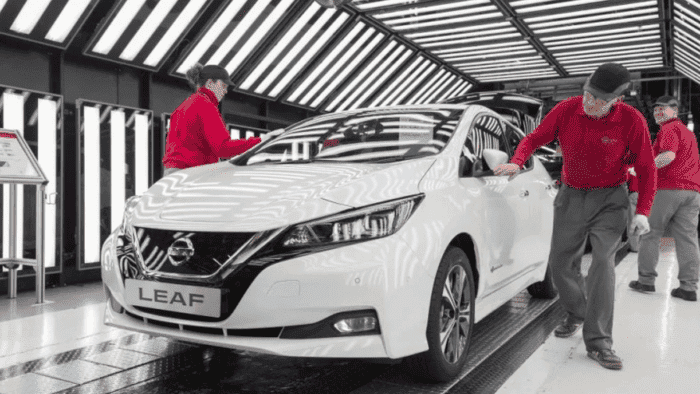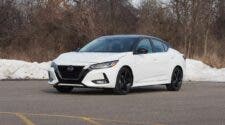The world’s first pure electric mass-produced car is about to be discontinued, but it has not attracted much attention. Well, this is not a Tesla vehicle, it is the Nissan Leaf. This car has a couple of honours which keep its memory in mind. Some of its honours include
- The world’s first mass-produced pure electric car
- World’s best-selling electric car
- World car of the year
- European Car of the year
In fact, Tesla can comfortably call this car its big brother and it would not be far from the truth. Today, when the real pure electric car era is trending, it has a similar fate to Kodak and Nokia. The reason is that the reform and innovation are small and the technical route is not firm. Yes, today we are talking about the Nissan Leaf – the world’s first pure electric production car.
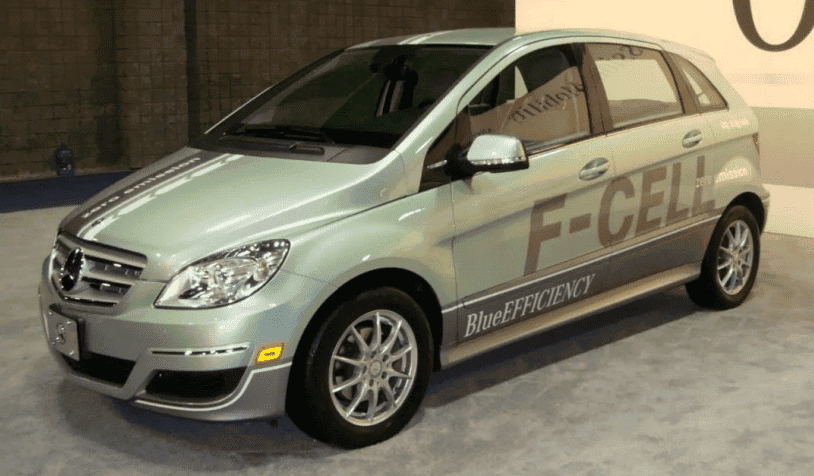
Nissan Leaf is about to leave the scene
The latest news says that the Nissan Leaf will be discontinued around 2025. What kind of car is this? It was launched in December 2010, when Tesla only launched the Roadster, and the Model S / X / 3 / Y had not even been seen. At that time, the car had a range of 175km (under NEDC conditions) and a battery capacity of 24kWh. The battery could be charged to 80% in about 30 minutes. The maximum output power of the motor is 80kW, the maximum torque is 280N⋅m, and the top speed can reach 145km/h.
It is worth mentioning that the starting price of this car was 2,984,250 yen (about $22,000 using the current exchange rate). The most powerful thing about this car is that the battery is very safe, and many institutions have endorsed it:
- The U.S. National Highway Traffic Safety Administration (NHTSA) rated the car out of five stars for two consecutive years at the start of its launch;
- The Insurance Institute for Highway Safety lists it as a “Top Safety Pick”
- The European New Car Assessment Programme (Euro NCAP) also awarded the Leaf the highest five-star car safety rating.
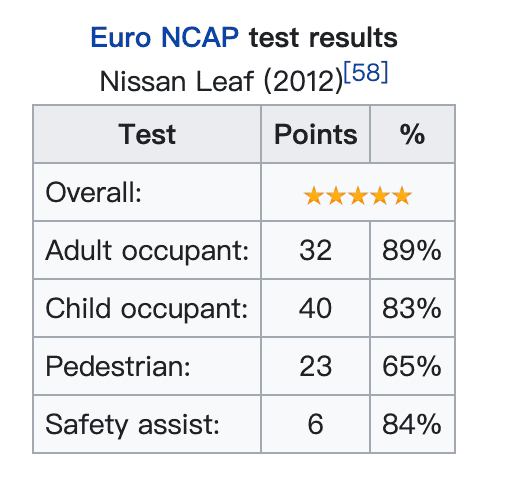
Statistics show that the Leaf sold a total of 35,000 units in Europe five years after its launch. Even with this number, the battery failure rate is still less than 0.01%. In comparison, the failure rate of gasoline vehicles is 25 times higher.
Why is the Nissan Leaf battery so safe?
The reason why it is so safe is mainly that AESC, the battery supplier behind it, has taken various measures such as enhancing the thermal stability of the cathode material, adding special additives to the electrolyte that make the electrode surface less prone to heat, and increasing the heat resistance of the separator, thereby reducing the risk of thermal runaway of the cell.
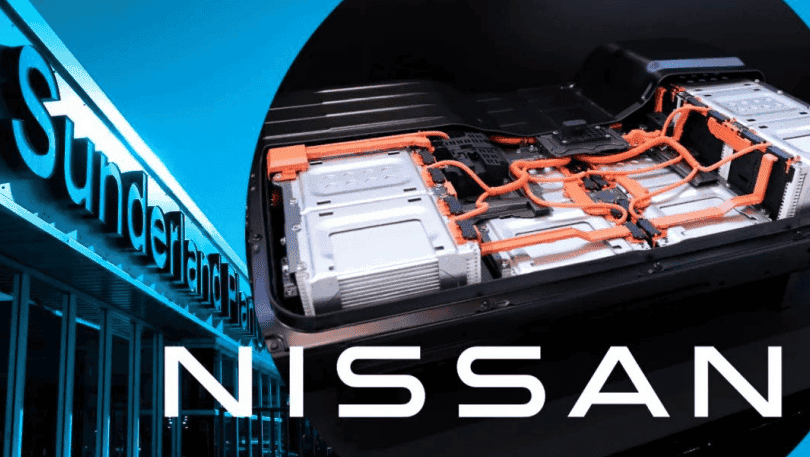
In addition, at the cell manufacturing level, each cell has more than 2,000 data collection points. This can effectively reduce cell inconsistency. Therefore, Nissan Leaf has long put environmental protection and energy saving as its main selling point. In 2012, it repeatedly emphasized that “it is more economical than driving a fuel car” in its advertisements. They described it as follows:
Running 60 miles (about 96.6km) costs less than 1 pound to drive a Leaf, but it costs 6 pounds to drive a gasoline car.
In addition to being far-sighted, the Nissan Leaf was also awarded the “Green Car Vision Award” in 2010. It beat the likes of the Ford Focus pure electric car, Mercedes-Benz F-Cell hydrogen fuel cell car, and Toyota Prius plug-in hybrid car.
Undoubtedly the king of electric vehicles, a real explosive product on the eve of the era of electric vehicles. However, even so, the Leaf has never become Nissan’s escape ticket, and secondly, it has not been able to continue the myth. With the impact of Tesla and new car-making forces, it has also become a member of the “dead” in the electric car market.
Winning at the starting line, but not having the last laugh
As the king of electric vehicles, Nissan Leaf had a good time in the market at the start. According to reports, as of December 2019, the total global sales of Leaf was 450,000 units, making it the best-selling electric car in the world.
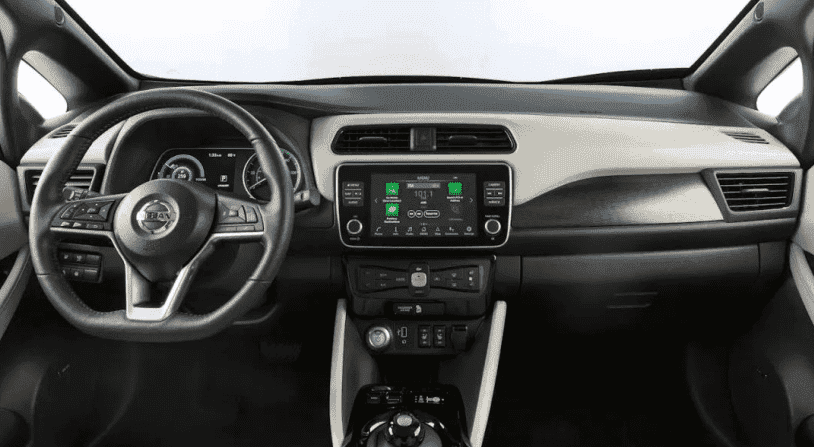
The reason why it sells so well can be seen from the feedback of car owners:
- At that time, there were not many models for electric vehicles to choose from, and the Leaf was affordable and cost-effective
- No need to refuel, save money and time
- The car is very convenient to park, and it is very comfortable to drive to and from getting off work
- The driving experience is simple with e-Pedal electronic pedal technology
From these points of view, Nissan Leaf, as a pioneer of electric vehicles, only meets the most basic requirements of a car. Its main emphasis is substituting for fuel vehicles. However, as the market competition becomes fierce, and there are more electric vehicle players, the situation is no longer the same.
Nissan Leaf shortcomings are now more visible
There are now more models to choose from and Nissan Leaf is no longer the only electric car that is convenient to park. As of the end of 2019, Tesla Model 3 sold a total of 449,000 units, instantly taking away the Leaf’s global sales crown.
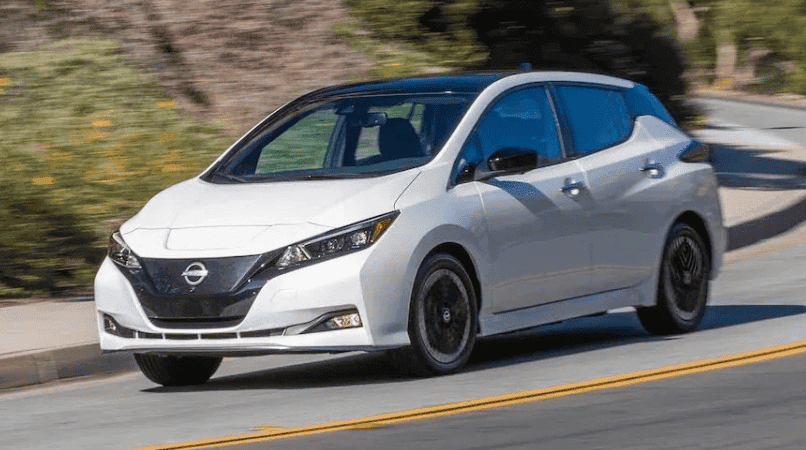
Under this impact, the shortcomings of the Leaf have become more prominent:
- The cruising range is too short for long-distance travel
- The battery capacity is low, the thermal management of the battery is not done well
- Active cooling of the battery is not standard and battery performance will drop significantly after a long time
- Poor acceleration performance, not functionally and aesthetically appealing
- Fast depreciation, 80% depreciation in 5 years after buying
- Remote OTA updates are not available
To sum up: the three-electric system is not good enough, and the intelligence is also flawed. But even so, Nissan Leaf is not bad, but it now exists in a field where there are a lot of far better options.

